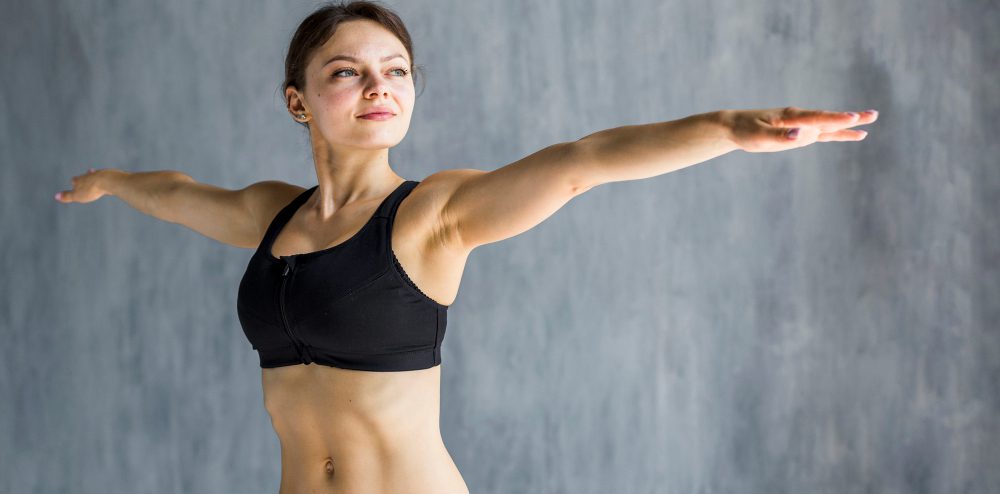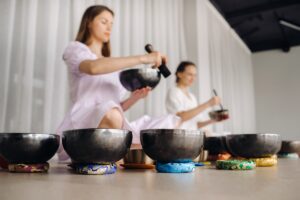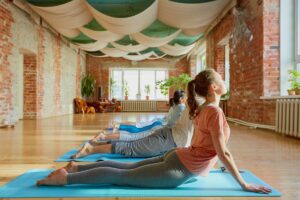These days, we probably hear the word ‘yoga’ more than ever before. After all, there’s a reason why this ancient practice that has been around for thousands of years. Yoga is easy to practice, it’s cheap, and it gives you many mental and physical health benefits. However, despite its growing popularity, there are still many misconceptions about yoga that discourage people from trying it for themselves.
Today, I’m here to tell you that many “downsides” of yoga are nothing but myths you should stop believing. If you’re ready to learn the truth, let’s discover them all together:

Yoga Is only For Flexible People
Yoga is a practice that can be changed to fit the needs of each person, so it can be done by people of all shapes and sizes. Let’s take for example Asanas – the basic yoga poses. They can be changed or done with the help of props so that anyone can do them, no matter how flexible, strong, or balanced they are.
For example, if your hamstrings aren’t very flexible, you can use a strap or a block to help you reach your toes in a forward fold. When doing a pose like downward-facing dog, someone with weak arms can use a chair for support. Meanwhile, you can use a wall for support in tree pose.
Also, there are different kinds of yoga that are good for people with different levels of fitness and skill. For instance, restorative yoga is a gentle, slow-paced style that is great for people who are healing from an injury or who are just starting out with yoga. Vinyasa flow, on the other hand, is a more active and dynamic style that is great for people who want to work out harder.
Yoga teachers can adjust poses for students with different abilities and limitations. This means that everyone can safely and comfortably practice yoga.
Yoga Is Not a Real Workout
People usually think of yoga as a practice that focuses on flexibility and relaxation, but it can also be a full-body workout that works on strength, flexibility, and cardiovascular fitness too!
Here’s your main takeaway: yoga poses, or asanas, are meant to work the muscles, joints, and bones of the whole body. In many yoga poses, you have to use your own body weight and gravity to create resistance, which helps you get stronger and you tone your muscles. Some poses, like plank, warrior II, and crow, are great for building core strength, while others, like downward-facing dog and triangle, are great for working the legs and arms.
Furthemore, yoga is a great way to make your body more flexible. Many poses stretch and lengthen the muscles, which can help increase your range of motion and make you less stiff. Forward bends, twists, and splits are all great ways to stretch the muscles in your legs, back, and hips.
Lastly, yoga can also provide cardiovascular benefits. Even though yoga isn’t as hard as running or cycling, it can still get your heart rate up and work your heart and lungs. Vinyasa flow is a type of yoga that is known for its fluid and dynamic movements, and it can be a great workout for the heart and lungs.
Yoga can be a full-body workout that works on strength, flexibility, and cardiovascular fitness. It combines movement, strength training, and flexibility training – and I’ve been feeling these benefits for the past 3 years of practicing it!

Yoga Is a Religion
Yoga is an old practice that comes from India, which means it’s based on spiritual and philosophical beliefs. Luckily for us, though, it can also be done in a way that has nothing to do with religion. This means that you can focus on the physical and mental benefits of yoga without any actual spiritual implication – just like any other workout!
In fact, many yoga classes today are taught in a nonreligious way;. For example, some studios and gyms have “secular yoga” classes that are specifically tailored to have nothing to do with religion or spirituality. There will be no chanting or meditation, and the teacher won’t even use any traditional Indian terms or references.
Yoga is a powerful way to improve yourself and grow as a person, no matter what your religious or spiritual beliefs are. By focusing on how yoga makes you feel physically and mentally, you can still enjoy its benefits without feeling weird or out of place.
Yoga Is only For Women
By now, you alerady know that yoga can help you get stronger, more flexible, and fitter overall. The poses, or asanas, can be changed to fit different fitness levels and skill levels, so anyone can do it. This way, both men and women can (and should!) practice yoga at some point in their lives. In fact, many types of yoga, like Ashtanga and Vinyasa, are known for being hard on the body and full of movement, which can be a great workout for men!
Of course, yoga is renowned for its positive impact on spiritual and emotional levels. Since women are genetically listening to their emotions more, this practice is particularly beneficial for them. However, men can reap the same benefits to reduce work-related stress and achieve mental balance overall.
Practicing yoga isn’t limited by gender roles or stereotypes, and it doesn’t matter what gender you are. It gives everyone a place to let go of societal expectations and judgments and focus on self-improvement, self-awareness, and self-acceptance.
Yoga Is only For Young People
Yoga is a low-impact form of exercise that can be changed to fit different fitness levels and skill levels, so people of all ages can do it.
Modifications and props can be used to make yoga easier for older people to do and safer and more comfortable for them.
One of the top examples is to change the poses so that they fit the person’s level of mobility. For instance, if a person’s hips don’t move very well, the teacher can make changes to the pose to make it easier for them to do. For example, instead of a full lunge, the teacher might suggest a modified lunge with the back leg on a block or folded blanket.
Alternatively, seniors can also do yoga using props like blocks, blankets, and straps. In standing poses, blocks can support your hands and feet, and they can also be used to help keep your balance in sitting poses.
Here’s a special trick from my experience: blankets. Yup, you read that right! Blankets can be used in seated poses to cushion the knees and hips, and you may even use them in standing poses to help with balance. Straps can help make poses like forward folds and seated twists more flexible (you’ll thank me later for this tip!).
Chairs can also be used as props to help with balance and support in standing poses. This makes it easier for older people who have trouble moving around to do yoga. Notably, c hair yoga is a popular way to do yoga because it lets people sit down or use the chair as a prop.
In addition to changes and props, it’s important to remember that older adults may need more time to warm up and cool down and may need to take more breaks during class. Other than that, though, you’re good to go!
Conclusion
If you’ve come this far, congrats! Now you know that (with minor adjustments) anybody can practice yoga. From its physical, mental, and spiritual benefits to creating opportunities to socialize, this exercise might be right regardless of age or gender.
Your main takeaway? Don’t let misconceptions or stereotypes discourage you from experiencing the benefits of yoga – or anything else in life!









